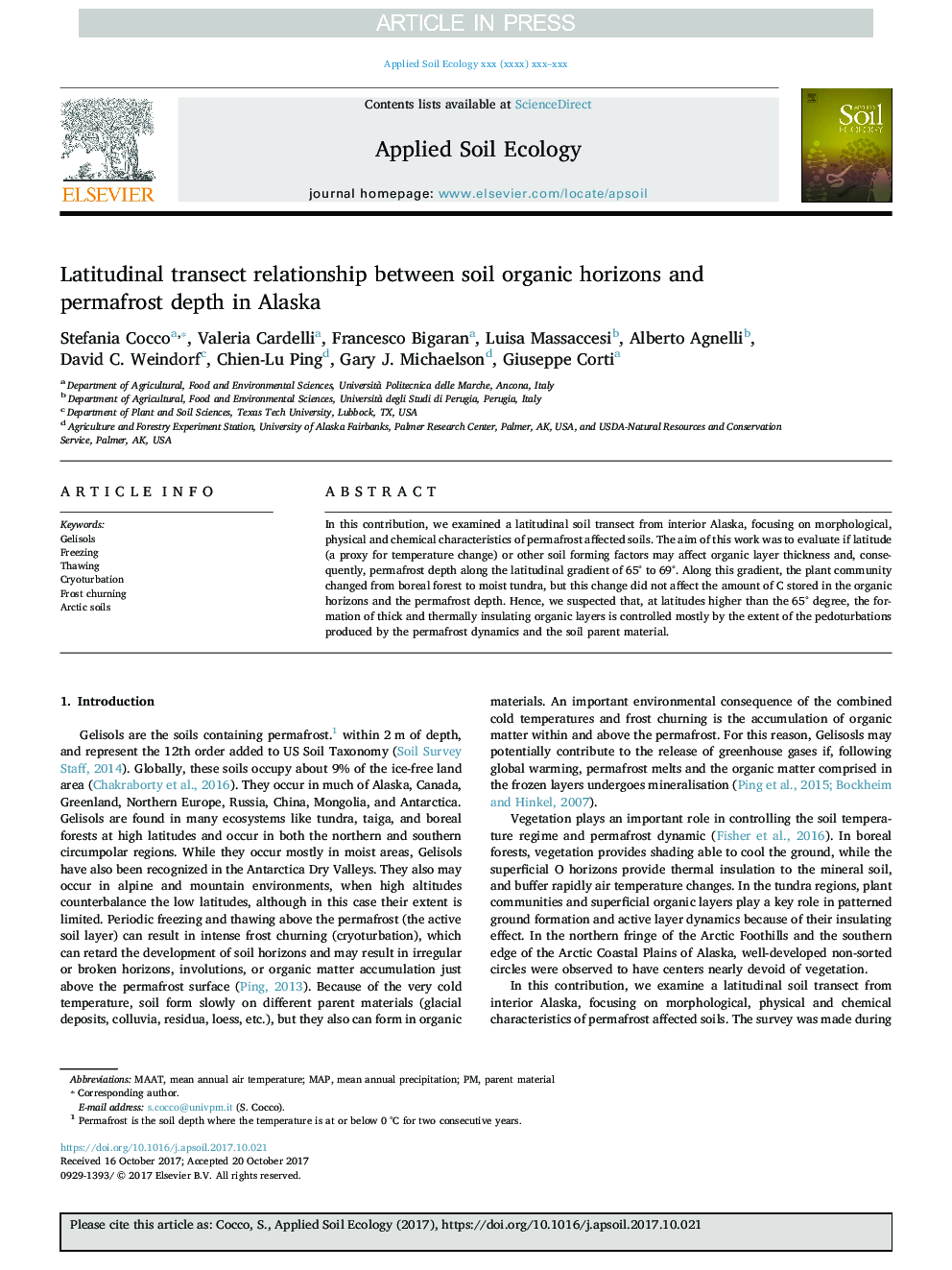| Article ID | Journal | Published Year | Pages | File Type |
|---|---|---|---|---|
| 8846880 | Applied Soil Ecology | 2018 | 9 Pages |
Abstract
In this contribution, we examined a latitudinal soil transect from interior Alaska, focusing on morphological, physical and chemical characteristics of permafrost affected soils. The aim of this work was to evaluate if latitude (a proxy for temperature change) or other soil forming factors may affect organic layer thickness and, consequently, permafrost depth along the latitudinal gradient of 65° to 69°. Along this gradient, the plant community changed from boreal forest to moist tundra, but this change did not affect the amount of C stored in the organic horizons and the permafrost depth. Hence, we suspected that, at latitudes higher than the 65° degree, the formation of thick and thermally insulating organic layers is controlled mostly by the extent of the pedoturbations produced by the permafrost dynamics and the soil parent material.
Keywords
Related Topics
Life Sciences
Agricultural and Biological Sciences
Ecology, Evolution, Behavior and Systematics
Authors
Stefania Cocco, Valeria Cardelli, Francesco Bigaran, Luisa Massaccesi, Alberto Agnelli, David C. Weindorf, Chien-Lu Ping Chien-Lu Ping, Gary J. Michaelson, Giuseppe Corti,
